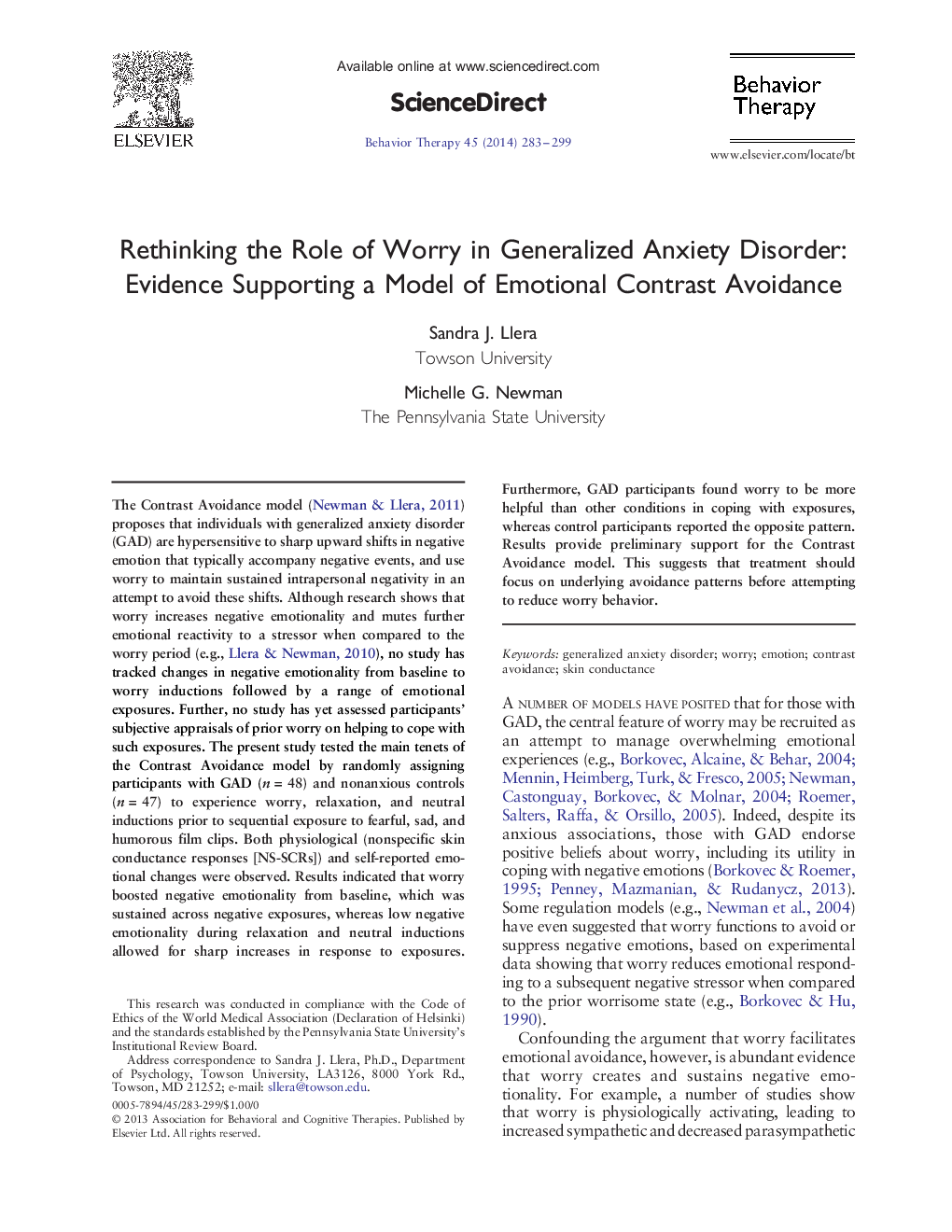| کد مقاله | کد نشریه | سال انتشار | مقاله انگلیسی | نسخه تمام متن |
|---|---|---|---|---|
| 901508 | 915872 | 2014 | 17 صفحه PDF | دانلود رایگان |
• Examined the Contrast Avoidance model: those with GAD use worry to maintain negativity to avoid negative emotional shifts.
• Measured emotionality during baseline, worry/relax/neutral, and emotional exposure periods, using GAD and control groups.
• Worry boosted negative emotion which carried across exposures; relax/neutral lowered emotion thus facilitating increases.
• Those with GAD found worry to be helpful in coping with exposures; controls found worry to be unhelpful.
• Overall, results supported the Contrast Avoidance model of GAD.
The Contrast Avoidance model (Newman & Llera, 2011) proposes that individuals with generalized anxiety disorder (GAD) are hypersensitive to sharp upward shifts in negative emotion that typically accompany negative events, and use worry to maintain sustained intrapersonal negativity in an attempt to avoid these shifts. Although research shows that worry increases negative emotionality and mutes further emotional reactivity to a stressor when compared to the worry period (e.g., Llera & Newman, 2010), no study has tracked changes in negative emotionality from baseline to worry inductions followed by a range of emotional exposures. Further, no study has yet assessed participants’ subjective appraisals of prior worry on helping to cope with such exposures. The present study tested the main tenets of the Contrast Avoidance model by randomly assigning participants with GAD (n = 48) and nonanxious controls (n = 47) to experience worry, relaxation, and neutral inductions prior to sequential exposure to fearful, sad, and humorous film clips. Both physiological (nonspecific skin conductance responses [NS-SCRs]) and self-reported emotional changes were observed. Results indicated that worry boosted negative emotionality from baseline, which was sustained across negative exposures, whereas low negative emotionality during relaxation and neutral inductions allowed for sharp increases in response to exposures. Furthermore, GAD participants found worry to be more helpful than other conditions in coping with exposures, whereas control participants reported the opposite pattern. Results provide preliminary support for the Contrast Avoidance model. This suggests that treatment should focus on underlying avoidance patterns before attempting to reduce worry behavior.
Journal: Behavior Therapy - Volume 45, Issue 3, May 2014, Pages 283–299
